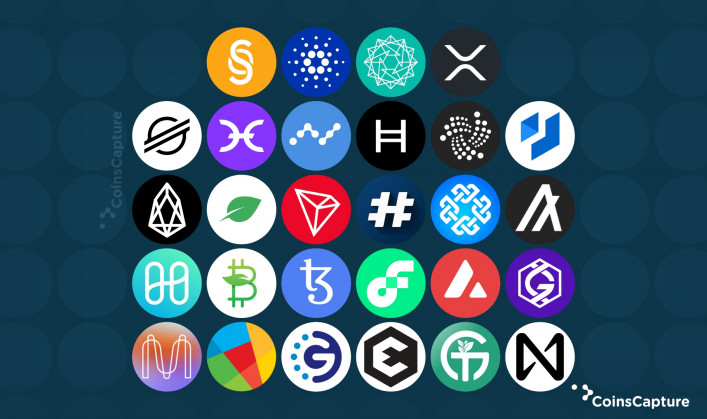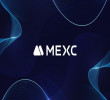5 July 2025
Top 28 Sustainable Cryptocurrencies for 2022
In recent months, Bitcoin's alarming environmental effect has received a lot of attention. Despite attempts to reduce Bitcoin's carbon emissions, some investors are abandoning the Cryptocurrency in favor of environmentally friendly alternatives. There are over 4500 Cryptocurrencies that may be mined which are the most trustworthy.
Also Read: 10 Most Popular Cryptocurrency Lawyers Of 2022
There has been a lot of discussion about Bitcoin's effect on the environment in recent months, and some investors are looking to make greener investments by switching to the most durable Cryptos. Numerous Blockchain initiatives have produced fresh, better robust coins beyond Bitcoin. Already Bitcoin's debut, there have been over 10,000 other Cryptocurrencies, many of which have since shut down whereas others continue to operate.
Also Read: Top 8 Metaverse Books To Read In 2022
We have compiled a list of the 28 most sustainable Cryptocurrencies for 2022 as follows:
1. SolarCoin (SLR)
SolarCoin operates on a worldwide scale, without a central bank or national authority. It is a Cryptocurrency similar to Bitcoin in that it can be bought, sold, and exchanged online, but it is designed to promote environmentally positive actions such as the production of solar power which can be independently verified.
2. Cardano (ADA)
Charles Hoskinson, who also helped build Ethereum, created Cardano, which bills itself as a "next-generation blockchain." Because of its groundbreaking multi-layer design, it represents the initial blockchain technology of its kind. Cardano's native token, ADA, is the eighth most valuable Crypto by market value.
3. Powerledger (POWR)
The Powerledger network is driven by the POWR token, which was launched in 2016/17 on the Ethereum blockchain. After its first release on Coinbase in November 2021, the token's value skyrocketed despite a general decline in the Cryptocurrency market.
4. Ripple (XRP)
Ripple is a start-up headquartered in San Francisco which issues XRP as a "alternative currency" to financial institutions so that they may offer their services to customers all over the globe.
5. Stellar (XLM)
With the intention of connecting conventional banking systems with digital currencies, the Stellar platform was launched in 2014 after splitting off from Ripple.
6. Holo (HOT)
Members of Holo will be able to construct their personal blockchains using the platform. Every agent functions as a decentralized database and blockchain, and in exchange for holo tokens, it provides storage space. The platform's capacity to let anybody with a browser as well as an enthusiasm in Cryptocurrencies is a big reason why Holo is gaining momentum quickly.
7. Nano (NANO)
Nano is a Cryptocurrency that consumes a lot less power than Bitcoin among several others, can be mined quickly, and doesn't cost anything to utilize. It first appeared at the close of 2015 and also continues to leave a little carbon impact even today.
8. Hedera (HBAR)
Researchers have rated Hedera, a Crypto which uses a PoS consensus process that consumes about 0.001 kWh each block, eighth due to its low energy use. While requiring far less energy than bitcoin, it has the potential to compete with big payment processors like Visa in terms of transactions per second.
9. IOTA (MIOTA)
IOTA isn't as price volatile as other Cryptocurrencies. Individuals in search of market stability and financial sustainability will be happy to hear this news, but investors seeking a similar return will be disappointed.
10. Devvio (DEV)
The blockchain solutions provider Devvio runs over an infrastructure known as DevvX. The startup has finished research showing that its network uses 347 million times less energy per transaction than Ethereum and 3.5 billion times less energy than Bitcoin.
11. EOSIO (EOS)
EOSIO is just a blockchain platform that is widely favored by programmers because of its low cost, great scalability, ease of usage with a variety of dialects, and low barrier to entry.
12. Chia (XCH)
Bram Cohen, founder of BitTorrent, designed Chia, a Cryptocurrency which can be mined using the AWS cloud. Through the use of downloaded software, users may participate in the decentralized network and earn Chia tokens without leaving their desktops.
13. TRON (TRX)
TRON is a public blockchain and non-profit corporation based in Singapore that is compatible with the vast majority of existing programming languages. Through the decentralized P2P network, developers may distribute their apps straight on the network, saving considerable resources.
14. MetaHash (MHC)
Powered by Blockchain 4.0, this open-source Cryptocurrency boasts a transaction validation time of less than three seconds. MetaHash said in its 2021 results report that it wants to include smart currencies as well as gateways in a more extensive tools launch.
15. Signum (SIGNA)
It was announced in June 2021 that Burstcoin will be rebranded as Signum and trade under the ticker code SIGNA. Despite a precipitous drop in price after being delisted from Poloniex in May 2019, the original Burstcoin was rendered almost worthless through a hard fork.
16. Algorand (ALGO)
By using a PoS consensus process, Algorand is able to provide much quicker transaction times than just its rivals. Algorand is available to everybody and has modest costs. The capability to implement smart contracts is key to Algorand's utility, allowing it a formidable competitor to Ethereum.
17. Harmony (ONE)
Launched in June of 2019, Harmony is a cross-chain application platform built on Ethereum that also has its own coin. Harmony's primary function is to unite those who make and those who use NFTs.
18. Bitgreen (WBNB)
This green Cryptocurrency was released as a competition to bitcoin. Similarly to Solarcoin, it aims to incentivize eco-friendly actions by offering monetary rewards for things such as consuming sustainable coffee, using public transportation, as well as giving back to the community. You may use it on Bitgreen's partner companies or trade it on marketplaces.
19. Tezos (XTZ)
When it was released in 2018, Tezos was a pioneer among the first generation of PoS smart contract layer one blockchains. Furthermore, with a valuation of $232 million, it was among the biggest ICOs ever conducted in July 2017.
20. Flow (FLOW)
Flow is the native Cryptocurrency of the Flow network and also the name of its fast, decentralized, and highly usable Proof-of-Stake platform. It's meant to be used in the development of internet-scale protocols and applications like games, applications, NFTs, and the like that need low-latency which is extremely quick processing times and elevated, that is, a lot of transaction happening very rapidly across millions of customers.
21. Avalanche (AVAX)
There will only ever be 720,000,000 AVAX tokens in circulation, since the network employs a Proof-of-Stake mechanism and its own currency, AVAX. Its design enables the deployment of either private or public blockchain systems as subnetworks, each of which may support up to 4,500 TPS at a cheaper transaction fee than comparable networks like Ethereum.
22. Gridcoin (GRC)
Through the Berkeley Open Infrastructure for Network Computing, Gridcoin is a decentralized blockchain that efficiently puts dormant computing capacity to use for scientific research (BOINC).
23. Mina Protocol (MINA)
Mina, with just 22 kb, is said to be the smallest blockchain available. It runs on the participation of its users, who rapidly synchronize and validate the network. Since several competing blockchains need powerful middlemen to operate nodes, this one is perhaps more sustainable and egalitarian.
24. ReddCoin (REDD)
One notable alternative Cryptocurrency, ReddCoin, was created specifically to be used as a digital social currency on social media platforms, such as Reddit and Twitter, to donate or compensate people, charity groups, as well as other companies directly, without the requirement for a third party.
25. GoChain (GO)
In 2017, a group of people well-versed in cloud computing developed GoChain. The goal was to create a platform which might grow in size without significantly increasing its power consumption.
26. EFFORCE (WOZX)
Steve Wozniak, co-founder of Apple, came up with the idea for EFFORCE and therefore the ticker symbol. This one-of-a-kind blockchain's only objective is to facilitate financial gains for Cryptocurrency traders even while supporting green causes related to energy efficiency.
27. GreenTrust (GNT)
To achieve its goal of making the world carbon neutral by 2050, GreenTrust is a durable, decentralized blockchain technology.
28. Near Protocol (NEAR)
Applications, NFTs, games, and other digital content are all hosted on the Near Protocol blockchain, which is verified as having zero net carbon emissions. There's even a mobile application that makes it easier to trade inside and sell your old phone to other people. The NEAR coin is used on the Near Protocol development platform, which also functions as a nonprofit organization and community of developers.
The Bottomline
Perhaps I've overlooked any viable Cryptocurrency possibilities among the over 4,500 available coins. This virtual financial industry is expanding at an exponential rate, so the best may yet be to come.
Disclaimer: The author’s thoughts and comments are solely for educational reasons and informative purposes only. They do not represent financial, investment, or other advice.






